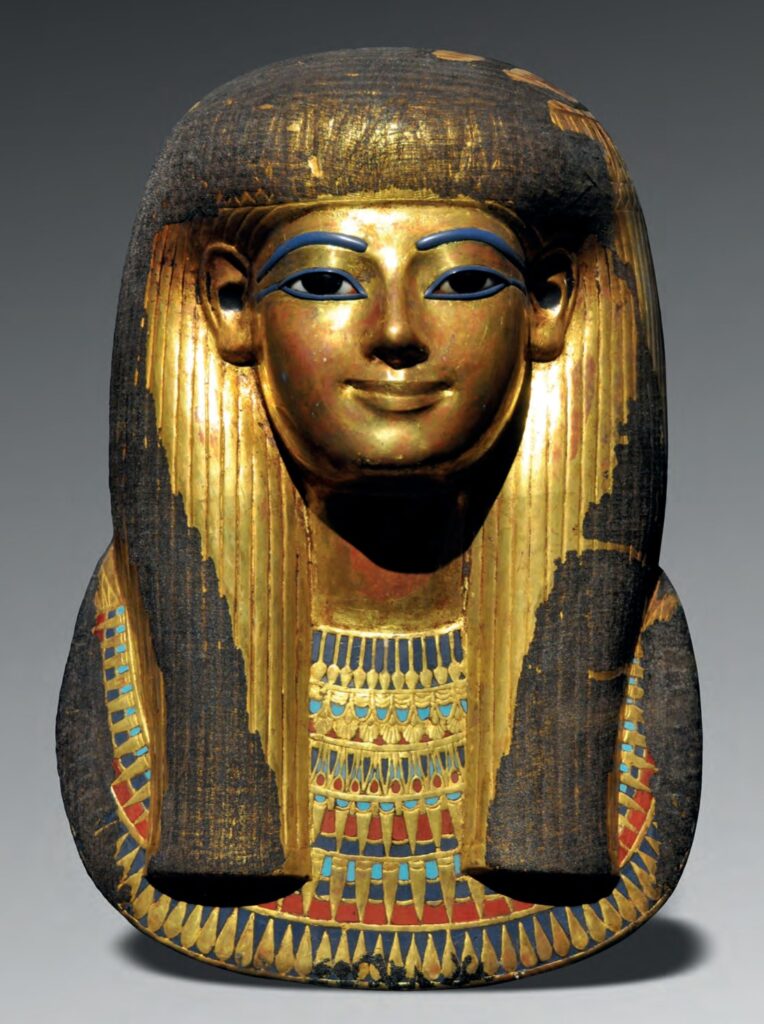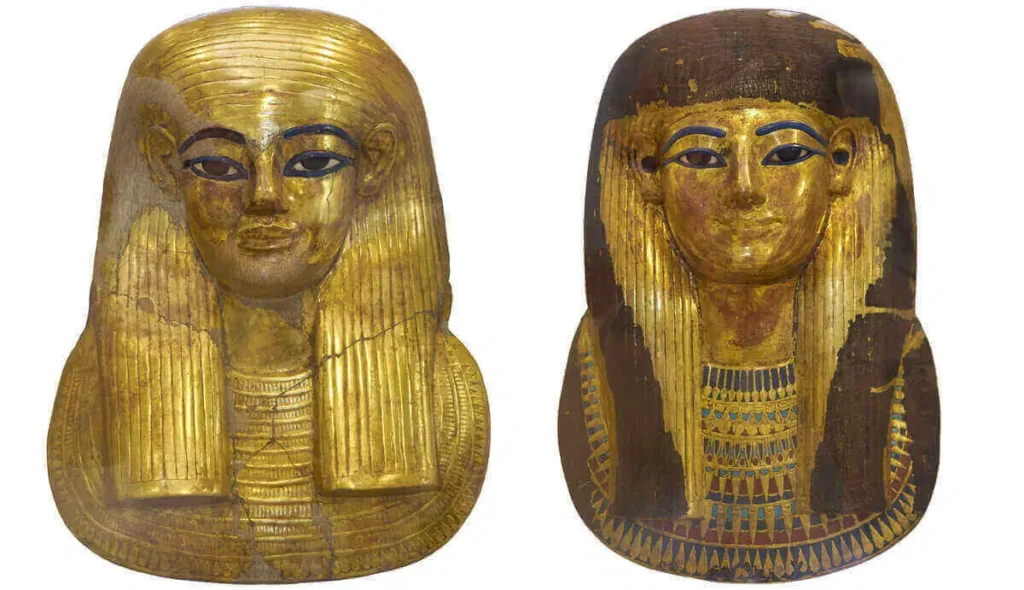The funerary mask of Lady Tjuya stands as an exquisite piece of ancient Egyptian artistry, blending symbolic elements with intricate craftsmanship to honor one of Egypt’s most influential women. This mask, crafted from plastered and gilded linen, was not only an object of beauty but also served as a protective and symbolic artifact for Lady Tjuya’s journey into the afterlife. Here, we explore the life of Lady Tjuya, the craftsmanship behind her mask, and the symbolic meanings woven into this historical masterpiece.
Who Was Lady Tjuya?
Lady Tjuya—also referred to as Tjuyu, Thuya, or Thuyu—was a prominent figure in the 18th Dynasty of ancient Egypt. She held an esteemed position within the royal family, as the mother of Queen Tiye, the grandmother of Pharaoh Akhenaten, and the great-grandmother of the famous boy king, Tutankhamun. Historical records suggest she died around 1375 BCE, likely in her early to mid-50s. Lady Tjuya’s connections to these iconic figures reveal her significant status in Egyptian society, which is mirrored in the fine details and rich materials used to create her funerary mask.
The Mask’s Physical Composition
The funerary mask was crafted using a cartonnage technique, in which layers of plastered and gilded linen were molded and painted to form a face cover. This type of mask was designed to preserve and protect the visage of the deceased, providing a recognizable face for the spirit to recognize in the afterlife. The detailed work and materials used—obsidian, calcite, faience, and gilding—are indicative of Lady Tjuya’s high social standing. The mask’s creation likely involved skilled artisans who carefully selected and placed each element to achieve a balance of realism and divine symbolism.

The Inlaid Eyes and Symbolic Materials
The eyes of Lady Tjuya’s mask are one of its most striking features. They are inlaid with obsidian and calcite, materials selected for their lustrous, lifelike quality. The use of obsidian, a volcanic glass, lent a deep, captivating quality to the pupils, while calcite provided a smooth, radiant contrast for the sclera. Green faience was also used, a material symbolic of renewal and rebirth in ancient Egyptian belief. The combination of these materials symbolizes protection, divine connection, and the hope for an eternal afterlife.
The eyebrows and cosmetic lines are crafted from dark blue glass, imitating the look of lapis lazuli—a precious stone that Egyptians associated with the heavens and divine wisdom. By adorning the mask with these materials, the artisans not only honored Lady Tjuya’s beauty but also invoked spiritual protection and a connection to the gods.
Facial Features: The Faint Smile and the Striped Wig
Lady Tjuya’s face is adorned with a subtle, serene smile, creating a lifelike yet idealized depiction. This faint smile, common in Egyptian funerary art, was believed to convey peace and contentment, a wish for the deceased to experience eternal bliss. Her striped wig frames her face, with details crafted to leave her ears visible. In Egyptian culture, wigs held significance both as a status symbol and as an item that denoted beauty and sophistication. By incorporating these realistic features, the mask beautifully balances the mortal and the divine.
The Broad Collar: Symbolism and Craftsmanship
The broad collar that covers the chest of Lady Tjuya’s mask is an elegant display of craftsmanship. Decorated with intricate floral and geometric patterns in multiple colors, the collar signifies beauty, fertility, and the richness of life along the Nile. Each color and shape used in this collar was chosen for symbolic reasons; for example, green hues often represented rebirth, while blues symbolized the life-giving Nile and connection to the heavens. Such collars were common in Egyptian art and adorned with intricate details to ensure protection and blessings for the deceased.

The Linen Shroud and its Mystique
The mask was originally covered by a thin linen shroud, which has now blackened with age. This shroud would have cloaked the mask in mystery, preserving Lady Tjuya’s likeness until she reached the afterlife. The shroud has partially disintegrated, especially around the wig and collar, but enough remains to reveal the mask’s impressive craftsmanship. This layer of linen added a final touch of solemnity, representing a transition between the mortal world and the divine.
Symbolism and Purpose: Protection and Divine Transformation
In ancient Egyptian belief, funerary masks served not just as likenesses of the deceased but as a medium for spiritual transformation. The cartonnage mask of Lady Tjuya was created to ensure her safe journey to the afterlife, where it was believed that her spirit would be recognized by the gods. The materials and symbols incorporated into the mask each held protective qualities, designed to guard her ka (spirit) and preserve her identity.
Legacy of Lady Tjuya’s Mask
Lady Tjuya’s funerary mask stands as a testament to the reverence and respect given to noble figures in ancient Egypt. Through its careful craftsmanship, symbolic elements, and protective properties, the mask illustrates the blend of art, religion, and social hierarchy that defined Egyptian society. This artifact provides us with insight into the complexities of Egyptian funerary customs and the rich culture that believed in life beyond death.
The mask’s survival into the modern era allows us to connect with the ancient past, offering a glimpse into the world of the 18th Dynasty and the legacy of Lady Tjuya.
